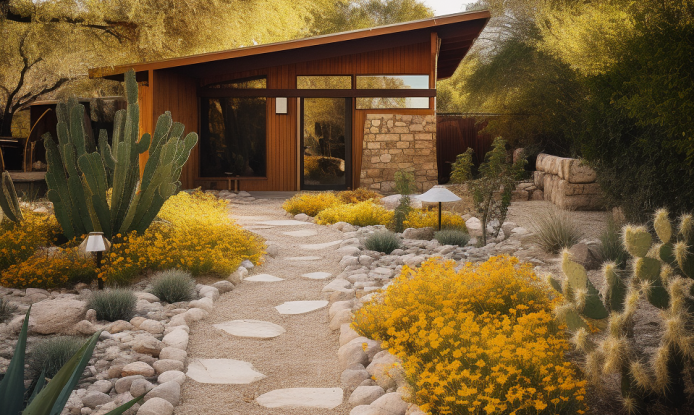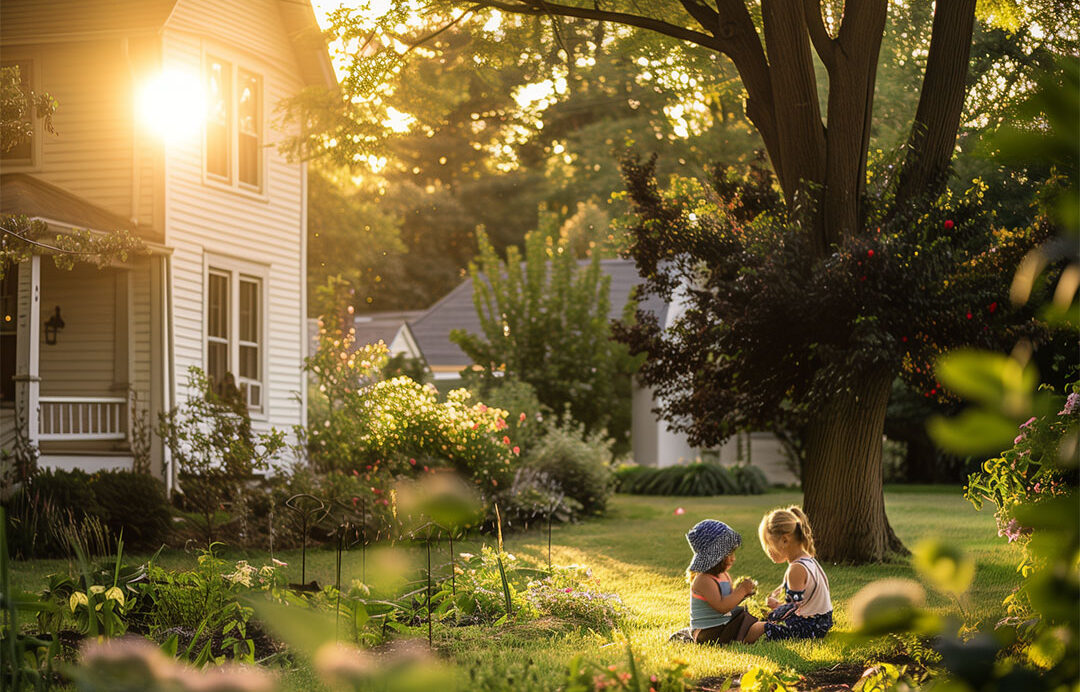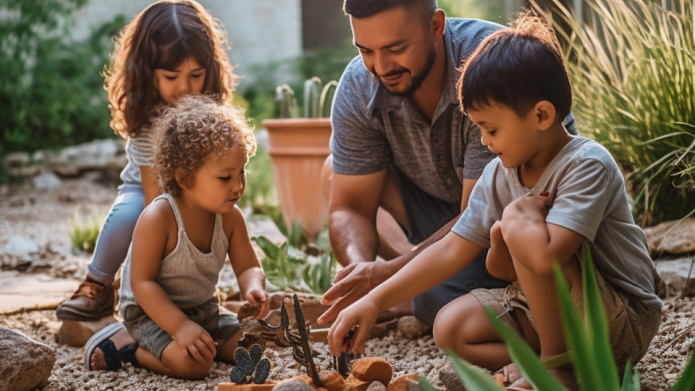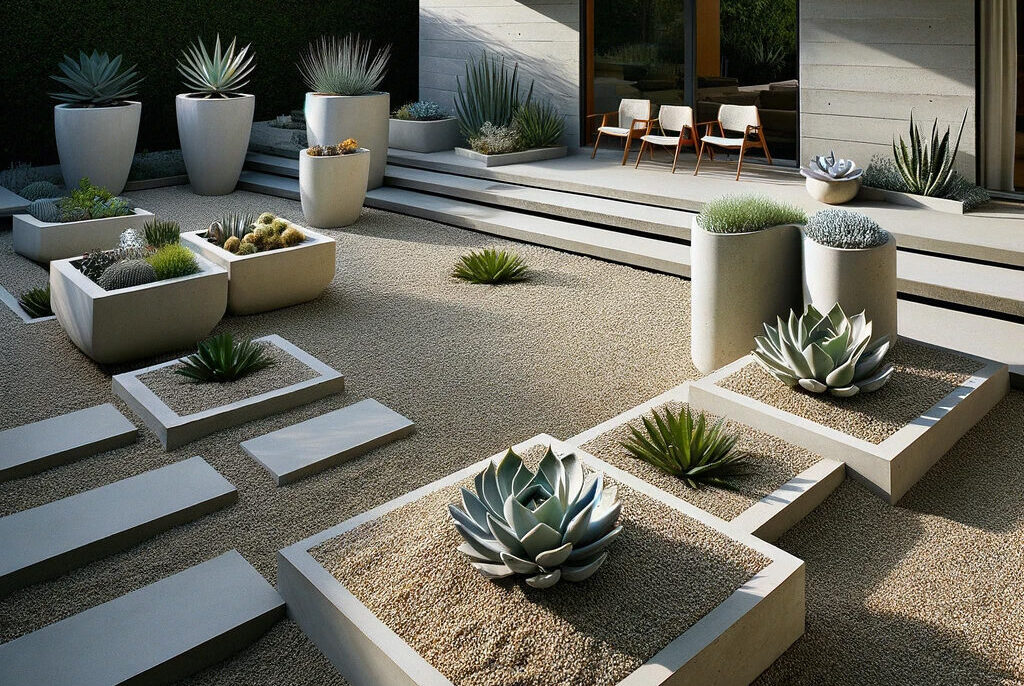Native Plants for Sustainable Landscaping in DFW
Creating and designing a sustainable landscape that is both aesthetically beautiful and environmentally appropriate in the Dallas-Fort Worth (DFW) area presents a number of challenges. When it comes to selecting plants that are able to grow in this area while also supporting sustainability, homeowners and landscapers need to exercise extreme caution at all times.
This is due to the fact that the terrain, the characteristics of the soil, and the difficulties that are related to the inadequate availability of water in this area are all distinct from one another. It is possible that you might make use of a fantastic strategy to navigate these challenges; incorporating native plants into your landscaping strategy can be a fantastic solution.
In addition to providing useful advice on how to include native plants in your landscaping project, the objective of this discussion is to highlight the advantages of utilizing native plants.
1. Benefits of Native Plants
Environmental Adaptability
Native plants perform exceptionally well in the climate and soil conditions that are unique to the DFW area. There are a number of advantages that native species have over non-native species, including the fact that they require less watering, fertilizing, and insect management. By utilizing plants that are well-suited to the local area, you may reduce the amount of water that is used, reduce your dependency on pesticides, and create a landscape that is both ecologically friendly and sustainable.
Biodiversity and Wildlife Habitat
The native plants in an area are extremely important in terms of providing support for the local wildlife populations. In addition to providing food and shelter, they also serve as breeding grounds for a wide variety of birds, butterflies, and other useful insects. You may contribute to the preservation of ecological balance and the promotion of biodiversity in the DFW region by introducing native plants into your landscaping.
Reduced Maintenance
Native plants are better able to adapt to the environment of DFW, which means that they require less upkeep than non-native species and hence demand less attention. They can flourish with only a small amount of watering, fertilizing, and trimming once they have established themselves. When you use native plants for your landscaping project, you can reduce the amount of time, effort, and money you spend on gardening and other maintenance duties.
Soil Health and Erosion Control
Extensive root systems of native plant species enhance soil structure and minimize erosion caused by soil erosion. Their large root system anchors the soil, reducing the risk of runoff and soil loss during periods of heavy rainfall. Given that erosion can be a concern in sloped or steep areas of the DFW region, the large root system of these plants helps anchor the soil, reducing the risk of runoff and soil loss during periods of heavy rainfall. This makes them particularly useful in certain areas.
2. Selecting Native Plants for DFW Landscapes
Researching Native Plant Species
Before choosing native plants for your landscape, it is essential to conduct some research on the subject. Identify native plant species that are well-suited to the local climate, soil conditions, and available sunshine in your particular location. You can obtain information on native plant species from a variety of sources, including online resources, botanical gardens, and local nurseries.
Drought-Tolerant Native Plants
Water scarcity is a major issue that needs to be addressed in the DFW area. In order to achieve sustainable landscaping, it is vital to select native plants that are able to withstand drought. Look for species that have adapted to the arid conditions that are prevalent in the region. Despite being subjected to prolonged periods of heat and having little access to water, these plants are able to maintain their attractiveness.
Native Plants for Wildlife Attraction
Incorporate native plants that attract birds, butterflies, and other beneficial insects into the landscape design to create a wildlife-friendly environment. Milkweed and black-eyed Susan are two examples of native flowering plants that attract colorful butterflies to your garden. These plants are wonderful selections since they supply nectar for pollinators and attract them to your garden.
Native Grasses and Groundcovers
Both grasses and groundcovers that are native to the area can be wonderful additions to your landscape. They offer an appealing alternative to conventional lawns, need less upkeep, and contribute to the overall health of the soil. If you want to create a groundcover that is both natural and sustainable, you should think about using native grasses such as buffalo grass or switchgrass.
Seasonal Interest with Native Plants
Enhance the beauty and interest of your landscape year-round by selecting native plants that offer seasonal appeal. It is important to look for species that produce brilliant flowers in the spring, vibrant foliage in the fall, and intriguing seed heads in the winter. In this way, you will be able to take pleasure in a landscape that is visually pleasing throughout the entire year.
3. Implementing Native Plants in DFW Landscapes
Proper Planting and Maintenance Techniques
Implementing the appropriate planting and management practices is absolutely necessary if you want your native plantings to be successful. It is important to properly prepare the soil, offer a suitable amount of water throughout the period of establishment, and mulch the area surrounding the plants in order to prevent weeds and keep the moisture in the soil. Always keep a close eye out for any illnesses or pests that may be affecting the plants, and if necessary, take the necessary measures.
Designing Native Plant Gardens
Whenever you are designing a landscape that includes native plants, you should think about putting them in designated native plant gardens together. You will be able to highlight the richness and beauty of native species, which will create a visual impression and allow you to do so. Furthermore, native plant gardens can serve as educational spaces for both your family and guests, raising awareness about the importance of environmentally responsible landscaping.
Native Plants in Containers and Small Spaces
Even with limited space in an apartment or small outdoor area, you can still enjoy the benefits of surrounding yourself with native plants. Containers or small outdoor spaces are ideal landscapes for the growth of many native plants. To establish a miniature native plant oasis, select compact varieties of native plants and position them strategically on patios, balconies, or rooftops.
Working with Professionals
You might want to think about getting assistance from professional landscapers or native plant experts if you are feeling overwhelmed or uncertain about the process of introducing native plants into your landscape design. In addition to offering helpful advice and suggestions for design, they are able to assist you in selecting the native plants that are best suited to meet your individual requirements and wants.
Conclusion
Incorporating native plants into your landscape is a choice that is both sustainable and kind to the earth. You will be able to reduce the amount of maintenance that you need to perform, preserve water, provide assistance for animals, and enhance the overall beauty of your outdoor space if you choose plants that are well adapted to the local climate and soil conditions. It is important to remember to conduct research on native plant species, select kinds that are resistant to drought, and plant in the appropriate manner. Enjoy the benefits of your landscaping while also making a positive contribution to the ecological well-being of the DFW area.
FAQs
1. Can I use native plants in any type of soil?
Native plants are adaptable to a wide range of soil types. However, it’s essential to choose species that are well-suited to the specific soil conditions in your area. If you have concerns about poor soil quality, consider incorporating soil amendments and fertilizers to improve the soil before planting.
2. Are native plants more expensive than non-native species?
The cost of native plants can vary depending on the species and availability. In some cases, native plants may be more expensive due to their limited supply. However, considering the long-term benefits and savings in maintenance, water, and fertilizers, investing in native plants can be a wise and cost-effective choice.
3. Do native plants require less watering?
Yes, native plants are naturally adapted to the local climate and require less watering once established. However, it’s important to provide sufficient water during the establishment period, usually the first year after planting. After that, native plants can thrive with minimal supplemental watering, relying on natural rainfall.
4. Can I still have a visually appealing landscape with native plants?
Absolutely! Native plants offer a wide variety of colors, textures, and growth habits, allowing you to create visually appealing landscapes. By carefully selecting native plants that offer seasonal interest, incorporating native grasses, and designing well-balanced arrangements, you can achieve a beautiful and sustainable landscape.
5. Where can I purchase native plants in the DFW area?
There are several nurseries and garden centers in the DFW area that specialize in native plants. Do some research and visit local establishments that focus on promoting native plant species. They can provide expert advice, help you choose the right plants, and support your sustainable landscaping journey.
More Articles by A1 Grass:
- Bermuda Grass for High-Traffic Areas: Top Resilient Landscaping Solution for 2024
- ZeroScape Landscaping Designs: Crafting a Drought-Tolerant Garden
- Mastering Hardscape Installation in the Dallas-Fort Worth Area: Tips for Success
- Choosing the Perfect Hardscape Materials: A Guide to Enhancing Your Outdoor Space
- 5 Affordable Hardscape DIY ideas: Transform Your Outdoor Space without Breaking the Bank




